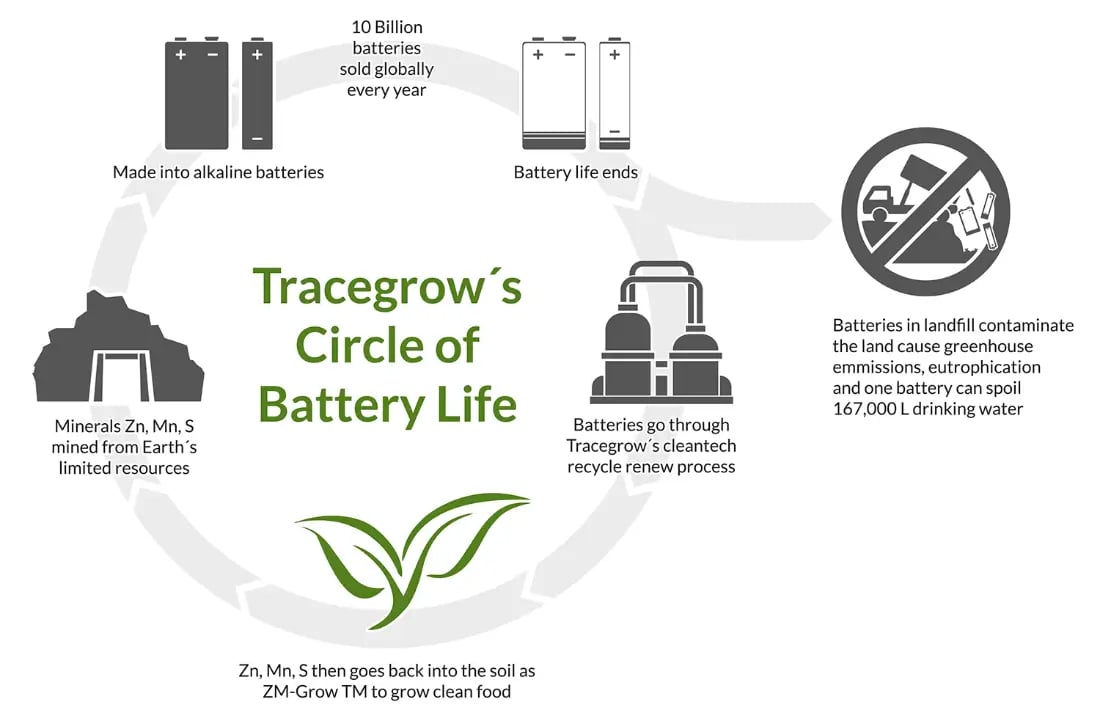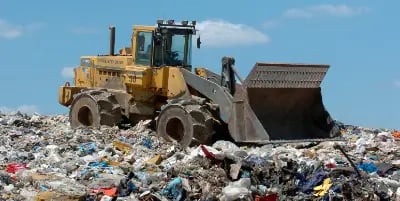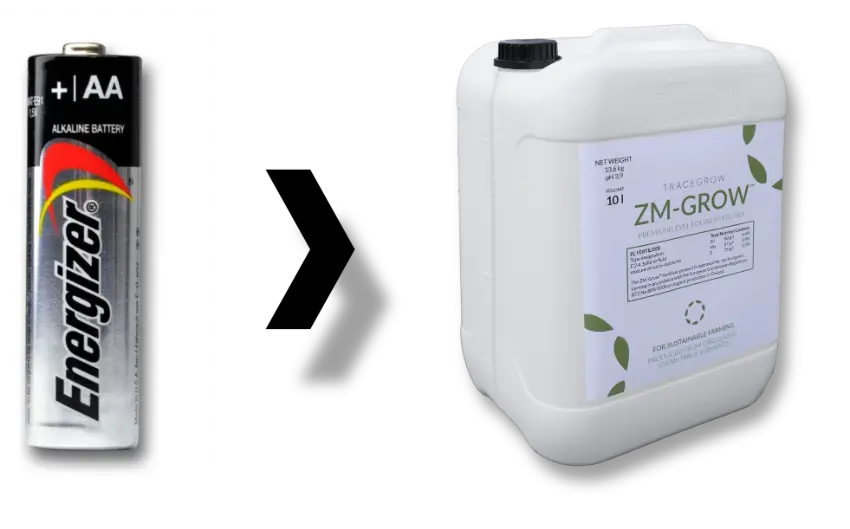Batteries are often viewed as the ecological option, something that is clean and green. But what happens when these batteries are depleted and can’t be used anymore?
A Finnish company called Tracegrow has the solution – at least for a certain type of batteries. Tracegrow takes your average household alkaline batteries (think AA, AAA or the like, the good old Energizer Double As that power your alarm clock, TV remote or maybe a wireless mouse or keyboard) and turns them into foliar fertiliser.

Tracegrow are able to do this because of the minerals contained inside the batteries, Zinc (Zn) and Manganese (Mn), which react with each other to produce energy. Once the energy producing capacity of the battery is gone, the minerals are still there, but the battery is useless. So what happens to it then?

Most Alkaline batteries end up in the landfill, where the minerals contained inside them are no good to anyone. This is obviously an issue as those minerals have to be mined out of the ground or recycled from old batteries – both inefficient and highly energy intensive processes. Tracegrow claims that their fertiliser conversion process of these batteries is capable of saving 90% of these minerals – while recycling is only able to save the zinc as the manganese is turned to waste. The process also refines out any harmful metals found in batteries such as nickel, cadmium and mercury, making the product safe to apply to plants.
Crop trials have shown the effectiveness of the alkaline battery fertiliser, with ZM-Grow increasing production up to 27% over not fertilising at all for some crops. In trials, it also increased Zinc and Manganese levels in potatoes by 40% and 67% respectively. ZM-Grow has been tested in a variety of climates, from Finland to Scotland, Italy & California, and is listed as being for most plants, especially wheat, oats, barley, and grass. It is also certified for organic farming in the EU, UK & Australia.
Acquiring the recommended daily intake of zinc in your food isn't that easy, and the human body uses zinc for almost 100 different vital chemical functions, from creation of DNA, growing new cells, healing damaged tissue and supporting a healthy immune system, so it comes as no great surprise that zinc deficiency is a relatively common heath problem – one that could be offset by fertilising the plants we eat with recycled & purified minerals from dead batteries.
Now that we've figured out how to effectively recycle venerable 1920s battery technology, what about the lithium-ion batteries that power today's electric cars? Hopefully a sustainable reuse pathway can be found for the minerals contained within them after their service life is expended, and with the rising popularity and sheer physical size of EV batteries we can cannot afford to take 100 years to do it.
Sources:
https://www.tracegrow.com/ecology
https://www.energizer.com/batteries/energizer-max-alkaline-batteries


.webp)